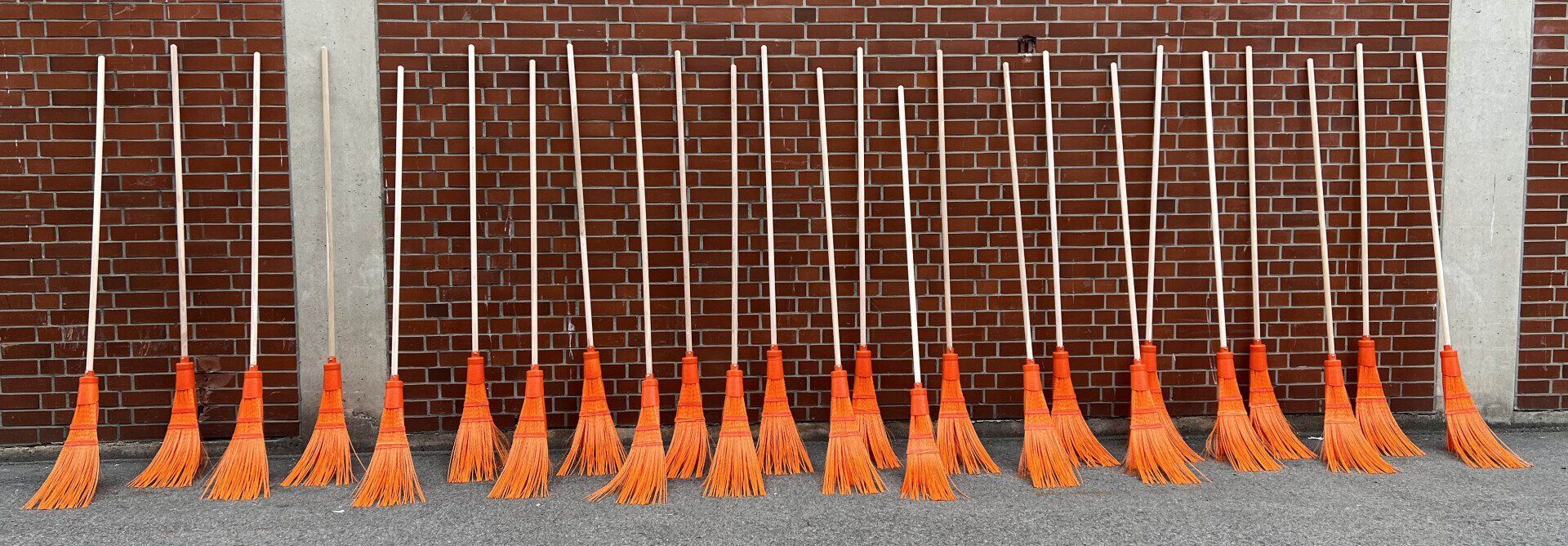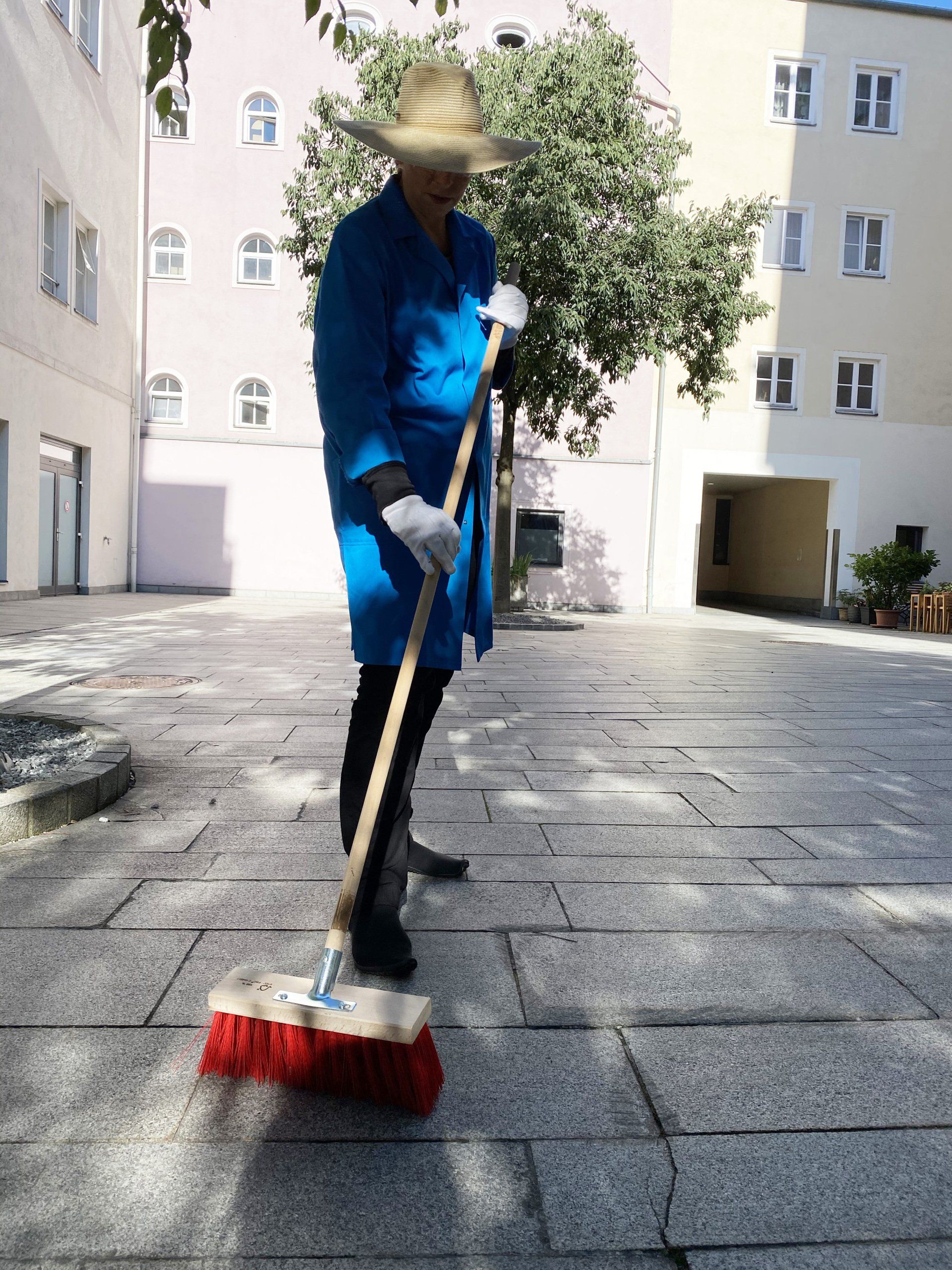Instruments
In addition to their different shapes and materials, the brooms used in everyday life also have different uses. Each “broom type” has its own sound and manageability.
In each location, the instrumentarium incorporates brooms that are locally used or produced.
By connecting with a visiting local street cleaners, I gain valuable insights from professionals about the types of brooms they use and their unique sweeping techniques. This exchange enriches the artistic process, grounding BesenBallett in the rhythms and practices of each place it inhabits.

Broom - a global cultural good
Brooms are everyday objects that are gradually disappearing from public spaces in our highly technological Western world. They are essential tools that help us adapt our living environments to changing conditions and maintain their functionality.
Unfortunately, brooms are increasingly being replaced by motorized equipment, often without considering the complex interrelationships they embody. This shift raises important ecological, social, economic, and political questions.
From an artistic perspective, the act of sweeping reveals a unique quality through the rhythm and sound of its execution—transforming broom movements into both dance and music simultaneously.
Wherever people settle and create homes, brooms have always been present. As one of humanity’s oldest tools, they represent the intersection of function and culture. Their shapes and designs reflect the needs of their users and the specific tasks they were created to perform. The diverse materials and techniques used in broom-making, along with the cultural customs surrounding their use, offer a rich insight into geographical and socio-cultural contexts.
Beyond their practical purpose, brooms transcend mere utility to become instruments of expression. They are not only tools for sweeping but also objects that can be played, turning everyday actions into rhythmic and musical experiences.








